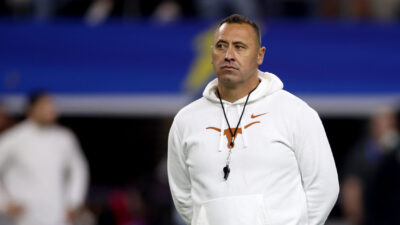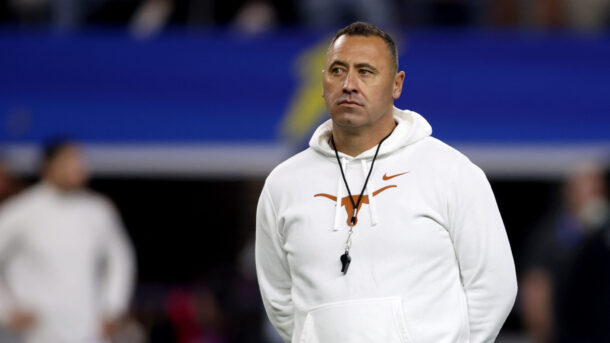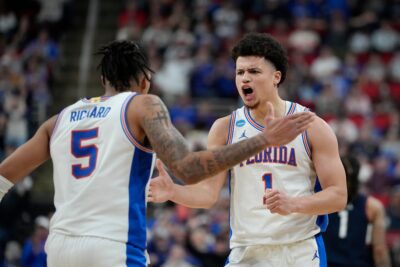Ad Disclosure
The 2024 Heisman Trophy race was close, with only 214 points separating the top 2 finishers in the voting.
And yet, the competition between winner Travis Hunter of Colorado and runner-up Ashton Jeanty of Boise State wasn’t nearly the closest in the 89-year history of college football’s most prestigious award.
The voting has been decided by less than 100 points 12 times since the famous bronze statue was first awarded in 1935.
Heisman Trophy Close Calls
Here is the rundown of those tight Heisman races, including some that shouldn’t have been that cloe.
2009 – Mark Ingram/Toby Gerhart, 28 points
The 2009 season was one of the most competitive in college football history, with 6 teams – Alabama, Texas, Florida, TCU, Boise State and Cincinnati – finishing the regular season undefeated. The Heisman race that year reflected the parity. Not only did it produce the closest winning margin, but the 489-point gap between first and fourth place was also the smallest ever. Stanford running back Gerhart was the most consistent offensive player that season, amassing 1,871 and 28 touchdowns on the ground. But Ingram was the most explosive. He finished with 1,658 yards and 32 touchdowns rushing to go along with another 334 and 3 scores receiving. He also had the advantage of playing for the team that would win the national championship. That and a spectacular 334-yard performance against South Carolina was enough to put him over the top against Gerhart, Texas quarterback Colt McCoy and Nebraska defensive end Ndamukong Suh.
1985 – Bo Jackson/Chuck Long, 45 points
In retrospect, there’s no way this race should have been this close. Four decades later, Jackson is still recognized as one of the greatest all-around athletes – if not the greatest athlete – of all time while Long has faded into the recesses of history. The best explanation for why the voting was so tight is injuries. Despite compiling 1,786 rushing yards and 17 touchdowns while averaging better than 6 yards per carry for Auburn, Jackson was sidelined for 2 games, both losses to Tennessee and Florida. Long, meanwhile, completed 66% of his passes for 2,978 yards and 26 touchdowns for an Iowa team that won the Big Ten and was ranked No. 1 for 5 weeks. The voting was split evenly by regions. But Jackson piled up a big enough margin in the South, Southwest and Mid-Atlantic to pull out a narrow victory.
1961 – Ernie Davis/Bob Ferguson, 53 points
This was a history-making race for several reasons. Not only was Syracuse’s Davis the first Black player to win the Heisman Trophy, his closest competition – fellow running back Ferguson from Ohio State – was also black. The 2 went head-to-head in what was the closest balloting in Heisman history at that time. Davis had fewer rushing yards (823) to Ferguson (938). But his 12 touchdowns were 1 more than Ferguson, In the end, Davis may have benefitted from voters looking to make amends for the egregious Heisman snub of another black Syracuse running back, Jim Brown, in the Heisman voting 7 years earlier.
1935 – Jay Berwanger/Monk Meyer, 55 points
Chicago running back Jay Berwanger beat out Notre Dame’s Meyer by 55 points for what was still called the “Downtown Athletic Club Trophy.” That margin is deceiving, however, because only 156 votes were cast and points weren’t awarded for second and third place votes as they are today.
1953 – John Lattner/Paul Giel, 56 points
The 1953 Heisman race was similar to the 2024 competition, in that versatility was deemed to be more important than big rushing numbers. Like Jeanty, Minnesota’s Giel was by far the better runner. He set school records that stood for decades and earned induction into the College Football Hall of Fame. But like Hunter, Notre Dame’s Lattner was the more well-rounded player. He ran for 651 yards and 9 touchdowns, caught passes for another 204 yards, intercepted 4 passes and returned 2 kickoffs for touchdowns while also handling the punting duties for an Irish team that went 9-0-1 and finished second to Maryland in the final polls. Giel went on to pitch in the Major Leagues for 6 seasons. At the time, his 1,794 points were the most by a player who didn’t win the Heisman.
2001 – Eric Crouch/Rex Grossman, 62 points
The battle between Crouch and Grossman was a clash of styles. Nebraska’s Crouch is still the only true option quarterback to win the Heisman. And his running ability is what eventually provided him with his slim margin against pure passer Grossman of Florida. Crouch ran for 1,115 yards and 18 touchdowns in leading the Cornhuskers to the national championship game. He also threw for 1,510 yards, although he did have more interceptions (10) than touchdown passes (7). Grossman more than doubled Crouch’s passing yardage with 3,896 to go with 34 touchdowns and 12 picks. But his chances may have been hurt by support for another traditional dropback passer, Miami’s Ken Dorsey, who finished third in the voting with a similar total (708-638) to that of Grossman.
1989 – Andre Ware/Anthony Thompson, 70 points
All things considered, the 1989 voting shouldn’t have been this close. Indiana running back Thompson had a nice season, rushing for 1,793 yards and 24 touchdowns for a team that finished with a losing record. But Ware had several things working against him. For starters, his Houston Cougars were on probation and were banned from appearing on television. He also had the handicap of playing in a run-and-shoot offense that produced inflated numbers. And no black quarterback had previously won a Heisman. Despite those handicaps, Ware put up numbers that were simply too eye-popping to ignore. He broke 26 NCAA records while throwing for 4,699 yards and 46 touchdowns.
1956 – Paul Hornung/Johnny Majors, 72 points
Hornung’s stats weren’t impressive by today’s standards. Notre Dame’s golden boy threw for only 917 yards with 3 touchdowns and 13 interceptions, and ran for just 420 and 3 scores. That, however, was good enough to edge out Tennessee running back Majors and Tommy McDonald of Oklahoma, who finished third. The best numbers this season, however, were posted by Syracuse running back Jim Brown, who compiled 986 yards (averaging 123.3 per game) and 13 touchdowns while also catching a touchdown pass and throwing a touchdown pass. Brown finished fifth, likely due to race. It would take another 5 years until another Syracuse back, Ernie Davis, became the first Black player to win the Heisman.
1964 – John Huarte/Jerry Rhome, 74 points
Runner-up Rhome had significantly better passing numbers than Huarte. He threw for 2,870 yards and 34 touchdowns with only 4 interceptions. But he played for Tulsa. And that was no match against the trigger man for a Notre Dame offense that helped produce an undefeated national championship season. It’s not as if Huarte’s stats weren’t competitive. He threw for 2,062 yards and 16 touchdowns. He was named on 216 first-place ballots to Rhome’s 186. Of note: The third-place finisher in 1964 was Illinois center and linebacker Dick Butkus, who went on to become a Pro Football Hall of Famer with the Chicago Bears.
2000 – Chris Weinke/Josh Heupel, 76 points
Weinke’s performance wasn’t the biggest issue working against him. The Florida State quarterback threw for a school-record 4,167 yards and 33 touchdowns while finishing his career as the ACC’s career passing leader. It was his age. He played 6 seasons of professional baseball before returning to the gridiron. And at 28 years old, he is still the oldest Heisman winner. While that might have scared off some voters, it wasn’t enough to prevent Weinke from beating Oklahoma quarterback and future Tennessee coach Josh Heupel, who led the Sooners to the national championship game by passing for 3,392 yards and 20 touchdowns.
1978 – Billy Sims/Chuck Fusina, 77 points
Oklahoma running back Sims got fewer first-place votes than Fusina. But he was named on enough second- and third-place ballots to eke out a narrow victory over the Penn State quarterback. His total of 827 points were the lowest since Terry Baker won with 707 points and only 2001 winner Eric Crouch with 770 has won with fewer since. Despite the slim margin and the low vote total, Sims was a worthy winner. He averaged 7.6 yards for a Sooners team that went 10-1. He led the nation with 1,762 rushing yards while scoring 20 touchdowns.
1962 – Terry Baker/Jerry Stovall, 89 points
Versatility has traditionally weighed heavily in the Heisman voting. But on this occasion, the opposite was the case. Oregon State’s dual-threat quarterback Baker, who threw for 1,738 yards and ran for 538 while combining to account for 24 touchdowns, got the better of LSU’s all-around star Stovall, a future Hall of Famer and Tigers coach who finished his college career with 1,071 rushing yards, 462 receiving yards, 700 return yards, 7 interceptions and the highest punting average in school history.
Award-winning columnist Brett Friedlander has covered the ACC and college basketball since the 1980s.



